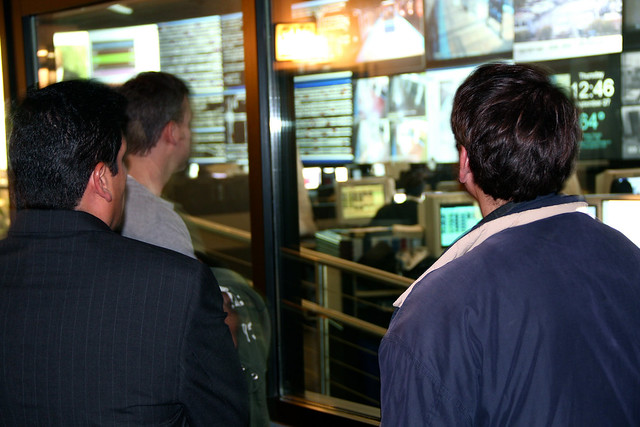The Chicago Transit Authority is out with a new publication called "When Things Go Wrong on the CTA" and recently gave a televised tour of its control center to Chicago Tonight -- two recent examples that highlight how the agency is improving its communication with riders.
"When Things Go Wrong on the CTA" features straightforward, accessible descriptions of a variety of things that ail the transit system -- and could apply in cities worldwide. You'll find answers about why your bus's operator purposely missed a green light or how many braking mechanisms are on an eight-car train (64).
Back in September, the CTA hosted an event at the control center in the West Loop for Chicago Social Media Week. Attendees were able to see the same "situation room" featured in this WTTW clip, getting an insider's look at how the CTA stays on top of constantly changing service provision. Tony Coppoletta, a communications manager, shared one of the innovations the CTA developed to help tell riders what's going on. "We developed templates for the most common service disruptions so that staff could essentially fill in the blanks and get the information out faster," he said.
Other changes have been very simple, according to Tammy Chase, director of communications and media relations. "It used to be we would just announce a train delay to customers on a train," she said. "Now, we'll announce that we have a sick passenger at such-and-such station and that medical crews are on the scene."
You can trace the shift to a more open and communicative CTA back more than half a decade. Former CTA President Ron Huberman began his tenure by implementing performance measures like the number of trains running at least 10 minutes late [PDF] and later oversaw the launch of Bus Tracker. He was followed by Richard Rodriguez, under whom Train Tracker was launched. Current CTA President Forrest Claypool has presided over the most far-reaching additions to the agency's communications strategy: Facebook and Twitter.





